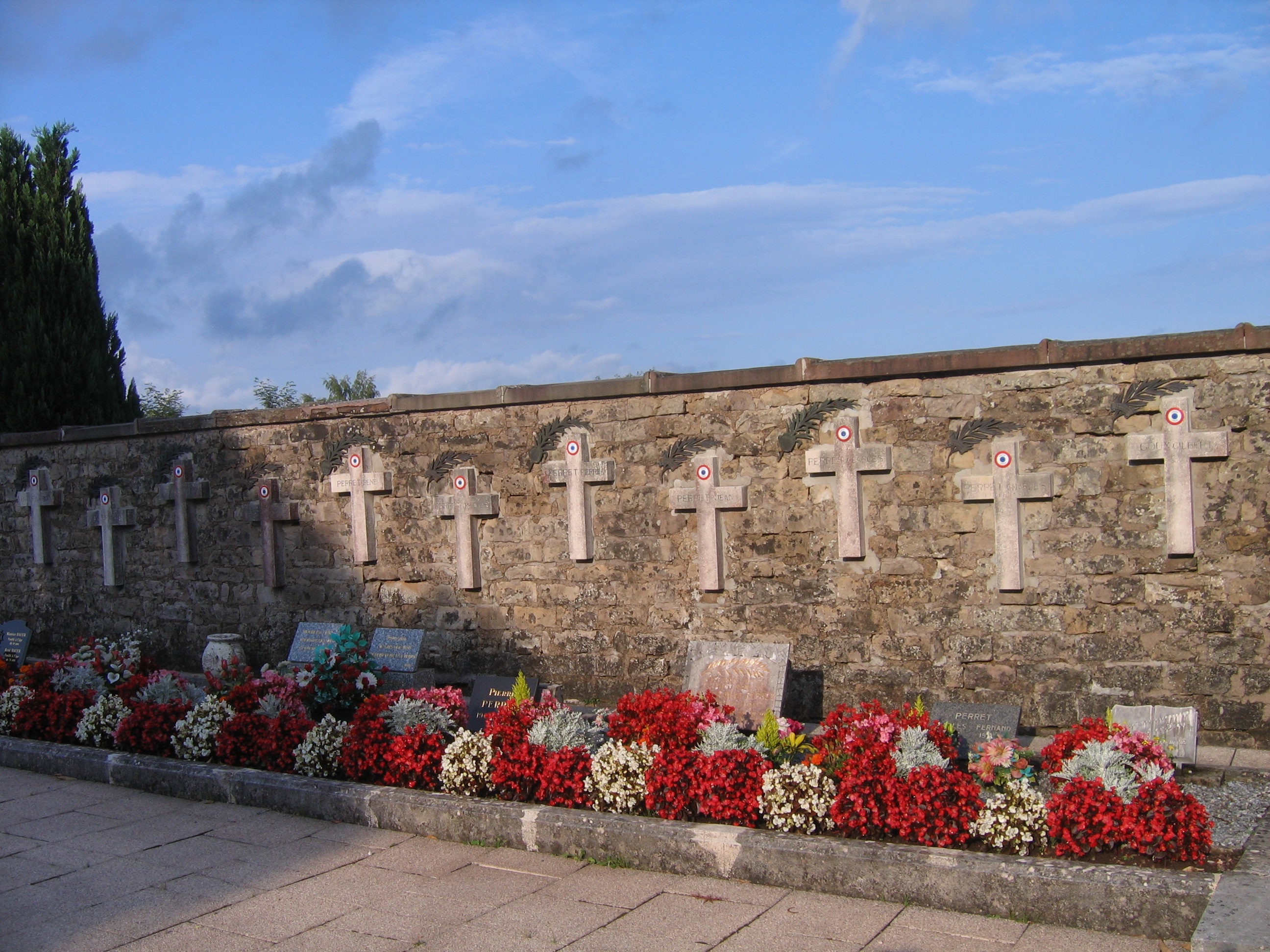Now that Etobon was once again under French control, people were free to make the trip to Chenebier to see where their men were buried.
Monday, November 27
Mama went to her son's grave for the first time. I’m too ill to go … The fighting has stopped at Belfort. All the forts have been surrendered.
We learned of the death of Dr. Pavillard, of Héricourt, wounded in the stomach by a shell blast. An old friend.
How things have changed in a few weeks! Generals de Lattre, Bethouard, LeClerc, have passed through here! Others, too. Only a few days ago, in an inspection tour around Belfort, the German general of the GQG of the Fuhrer wrote to his master, “Facing us, we have only French African troops, fatigued and decimated by battles in Italy and Provence, and poorly trained FFI, unfit for any combat. No serious attack will have to be dealt with in this sector for several weeks, if not several months.” The next day, the general was killed in the front lines, his report still in his pocket. And it became, in record time, an avalanche: Héricourt, Montbéliard, Belfort taken, our troops glide along the entire Swiss border and touch the Rhine! And now they’ve announced LeClerc is at Strasbourg and on the Rhine! One more kick in the pants around Colmar and we’ll be on their turf! And they were chasing our cows at Etobon ten days ago and planning to burn us up nine days ago. The punishment is beginning! Those monsters have caused us enough misery.
Thursday, November 30
A card has arrived, written by Jean to his twin brother, Jacques, that damned day, September 27. He says, “I have a creepy feeling that really bothers me.” Is it possible? To be so far from each other, yet have a premonition like that? Ah! Twins! What a homecoming our Jean will have.
Today they will bury the three sons of Chenebier who were killed at Ecurcey. Just recently, three men from Frahier were blown up by a mine.
What a surprise! Here’s my sister’s Jacques, who fought in the Tunisian campaign of the 66th artillery and now serves in a munitions unit. Imagine the joy of this boy, after years of silence away from home, when he sees his steeple, his roof, crossing the threshold of his house … only to learn that his father and his brother Samuel were shot two months ago. To say they’re dead would be sad enough, but shot, taken to a slaughterhouse, horrible!

 Katherine Douglass
Katherine Douglass

